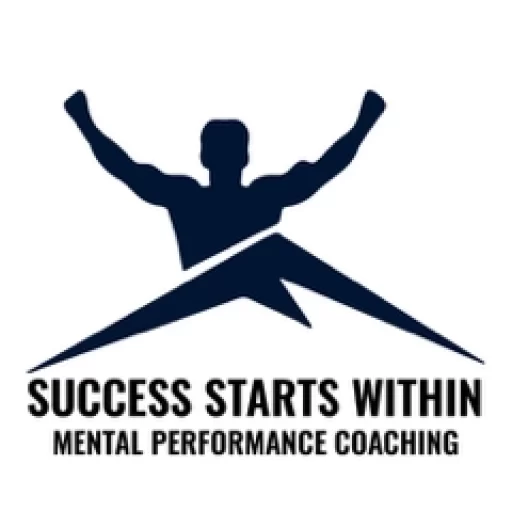As an athlete, you’ve likely faced moments when negative thoughts creep in, threatening to derail your performance. Whether it’s self-doubt before a big game or replaying past mistakes during a game, negative thoughts can feel like an invisible opponent, working against you at every turn.
The good news? You have the power to stop these thoughts.
Mental training is just as important as physical training in sports. Your mind plays a significant role in how you perform, how you handle pressure, and how you bounce back from setbacks.
In this article, we’ll explore what causes you to have negative thoughts in sports, the difference between conscious and subconscious thoughts, and how to stop negativity in its tracks.
By understanding and implementing these techniques, you can develop a more confident mindset.
The Difference Between Conscious and Subconscious Thoughts
To tackle negative thinking, it’s crucial to first understand where your thoughts come from. At their core, thoughts fall into two categories: conscious and subconscious thoughts.
Conscious thoughts are the ones you actively think about. These are the thoughts you’re aware of, the ones you can analyze, question, and control in real time.
For example, if you’re standing on the free-throw line and thinking, “I need to bend my knees more,” that’s a conscious thought. You’re intentionally focusing your mind on the task at hand.
Subconscious thoughts, on the other hand, operate in the background. These thoughts are automatic and often stem from past experiences, habits, or beliefs.
You might not even realize they’re influencing your actions on the field or court.
For instance, if you’re on a losing streak and keep thinking, “I’ll probably mess up again,” that’s your subconscious mind at work, replaying a belief formed through past disappointments.
The challenge with negative thinking in sports is that it often stems from the subconscious mind.
These ingrained beliefs and patterns can be harder to notice and even harder to change. But here’s the key: while your subconscious might feel like it’s running the show, your conscious mind has the ability to step in and take control.
How Subconscious Thoughts Are Formed
Subconscious thoughts don’t appear out of nowhere. They’re the result of repetition and past experiences. Think about the beliefs you hold about your abilities as an athlete. Were they formed after a series of wins? Or perhaps after a string of failures?
For example, let’s say you’re a soccer player who missed a penalty kick during an important game. The disappointment and embarrassment from that moment might create a strong emotional imprint in your mind.
If similar situations arise—say you’re taking another penalty kick—your subconscious might replay that earlier failure, feeding you thoughts like, “I’m not good at penalty kicks.”
Over time, this pattern becomes automatic, and the thought surfaces without you even realizing it.
Subconscious beliefs are also influenced by external factors like coaching, teammates, and even your upbringing.
If a coach repeatedly criticizes your performance without offering constructive feedback, you might start believing, “I’m not cut out for this sport.”
Similarly, growing up in an environment where success is tied to perfection can create a subconscious fear of failure, which manifests as anxiety and negative thinking.
The important takeaway here is that while subconscious thoughts are powerful, they’re not permanent. Just as they were formed through repetition, they can be reshaped using the same principles.
Reprogramming Your Subconscious Mind
Reprogramming your subconscious mind requires intention, patience, and consistent effort. This process isn’t about ignoring or suppressing negative thoughts—it’s about replacing them with more constructive ones.
Here’s how to start:
Identify Your Negative Thought Patterns
The first step in reprogramming your subconscious is awareness.
Pay attention to the recurring negative thoughts you experience during practice, games, or even in daily life. Write them down. For example, do you often think, “I’m not fast enough,” or “I always choke under pressure”?
By identifying these patterns, you can begin to understand their origins and how they’re influencing your performance.
Awareness is the foundation for change.
Replace Negative Beliefs with Positive Affirmations
Once you’ve identified your negative thought patterns, it’s time to counter them with positive affirmations. These aren’t empty statements; they’re intentional, empowering beliefs you want to internalize. For example:
- Replace “I’m not good at penalty kicks” with “I’m calm, focused, and capable under pressure.”
- Replace “I always choke” with “I rise to the challenge when it matters most.”
Repeat these affirmations daily. The more you repeat them, the more they become ingrained in your subconscious, eventually replacing the negative beliefs.
Visualize Success
Visualization is a powerful tool for reprogramming your subconscious. Spend time each day vividly imagining yourself performing at your best.
Picture yourself scoring the winning goal, nailing the perfect dive, or executing a flawless serve. Engage all your senses—see it, hear it, feel it.
When you visualize success consistently, your subconscious starts to associate those positive images with your abilities. Over time, this reduces the power of negative thoughts and builds a stronger, more confident mindset.
Use Emotional Anchors
Positive emotions are a critical part of reprogramming. Think back to a moment when you felt unstoppable in your sport. Relive that memory and anchor the emotions it brings.
For example, if you felt proud of yourself after a big win, channel those feelings whenever doubt is present. Pairing positive emotions with affirmations and visualization reinforces their impact on your subconscious.
Using Conscious Thinking to Stop Negative Thoughts in the Moment
While reprogramming your subconscious is a long-term process, you also need strategies to handle negative thoughts in the moment.
This is where conscious thinking comes into play.
Here’s how the process works:
- Catch the Thought: The moment you notice a negative thought creeping in, pause and acknowledge it. For example, if you’re about to take a shot and think, “What if I miss?” don’t let the thought spiral. Instead, say to yourself, “There’s that thought again.” Labeling it helps you distance yourself from it.
- Replace the Thought: After challenging the negative thought, replace it with a constructive one. For instance, if you think, “I’m going to mess up this play,” replace it with, “I’ve trained for this moment, and I trust my skills.”
- Use a Physical Cue: Physical cues can help disrupt negative thinking. Some athletes use techniques like snapping a rubber band on their wrist, clenching their fist, or taking a deep breath. These cues serve as a reset button, grounding you in the present moment and refocusing your mind.
- Stay Present: Pay attention to your breath, the feel of the ball in your hands, or the sound of your feet hitting the ground. The present moment is where your power lies.
Final Thoughts
Stopping negative thoughts in sports isn’t about eliminating them entirely—it’s about learning to manage them effectively.
By understanding the difference between conscious and subconscious thoughts, recognizing how subconscious beliefs are formed, and using both long-term and in-the-moment strategies, you can take control of your mindset.
Remember, mental training is a skill. Just like perfecting your jump shot or refining your serve, mastering your thoughts takes time and practice. Be patient with yourself, stay consistent, and trust in the process.
If you’re interested in a more personalized approach to stop negative thinking as an athlete, click here to learn more about one-on-one mental coaching.
When you commit to stopping negative thoughts and cultivating a positive, focused mindset, you’ll not only see improvements in your performance but also in your confidence and enjoyment of the game. Your mind is your greatest asset—use it wisely, and there’s no limit to what you can achieve.
Thank you for reading and I wish you the best of success in all that you do.





